-
 bitcoin
bitcoin $111375.742210 USD
-8.60% -
 ethereum
ethereum $3780.311592 USD
-13.98% -
 tether
tether $1.001299 USD
0.07% -
 bnb
bnb $1093.375857 USD
-13.01% -
 xrp
xrp $2.339375 USD
-16.91% -
 solana
solana $185.029017 USD
-16.69% -
 usd-coin
usd-coin $1.000230 USD
0.04% -
 tron
tron $0.319531 USD
-5.16% -
 dogecoin
dogecoin $0.190791 USD
-23.59% -
 cardano
cardano $0.638663 USD
-21.82% -
 ethena-usde
ethena-usde $0.998483 USD
-0.20% -
 hyperliquid
hyperliquid $37.741486 USD
-14.68% -
 chainlink
chainlink $17.229851 USD
-22.17% -
 stellar
stellar $0.316546 USD
-16.74% -
 bitcoin-cash
bitcoin-cash $507.861193 USD
-13.18%
How can I manage token authorization permissions on my Ledger device?
Always review and approve token authorization requests on your Ledger device manually—each approval grants spending rights to smart contracts, so vigilance is key to securing your assets.
Sep 30, 2025 at 05:18 am

Understanding Token Authorization on Ledger Devices
1. Ledger devices provide a secure environment for managing cryptocurrency assets, including control over token authorization permissions. These permissions determine which tokens can interact with decentralized applications (dApps) through your wallet interface. When connecting your Ledger to platforms like MetaMask or Rabby, certain tokens may request approval to spend your funds, often through smart contract interactions.
2. Token authorization is not automatic and must be explicitly approved by the user through the Ledger device’s screen. Each time a dApp requests access to a specific token balance, a confirmation prompt appears on the Ledger hardware wallet. Users must manually verify and approve each transaction using physical button presses, ensuring no unauthorized access occurs.
3. The process begins when a dApp triggers an “Approve” function on an ERC-20 or equivalent token contract. This sets an allowance for the dApp or smart contract to transfer tokens from your wallet up to a specified amount. Without this approval, the dApp cannot move any tokens on your behalf, even if it has connected to your wallet.
4. It's crucial to understand that once a token is authorized, the associated smart contract holds spending rights within the defined limit. This authorization persists until revoked or the allowance is fully used. Some malicious dApps exploit broad allowances by initiating unexpected transfers, making careful review essential before confirming any authorization request.
Steps to Manage Token Permissions via Ledger Live and Connected Interfaces
1. Open the wallet application connected to your Ledger, such as MetaMask or Trust Wallet, ensuring the correct network (e.g., Ethereum, BSC, Polygon) is selected. Navigate to the token section and locate any previously approved contracts under settings or permissions.
2. Use third-party tools like revoke.cash, DeBank, or Blockaid to analyze existing token approvals linked to your wallet address. These platforms scan your transaction history and display active authorizations, showing which contracts have spending access to your tokens.
3. Identify unnecessary or suspicious authorizations and initiate revocation transactions directly through these tools. Revoking permissions generates a new blockchain transaction that resets the allowance to zero, effectively cutting off the contract’s ability to spend your tokens. Confirm each revocation on your Ledger device just like any other transaction.
4. Regular audits of token permissions help maintain security. Frequent users of dApps should perform checks monthly or after interacting with new protocols. Removing unused authorizations reduces attack surface and limits potential damage in case of a compromised contract.
Best Practices for Secure Token Authorization Management
1. Always verify the legitimacy of a dApp before approving any token permissions. Research the project, check community feedback, and confirm domain authenticity to avoid phishing sites requesting unnecessary access.
2. Limit approval amounts whenever possible. Instead of granting unlimited allowances, specify exact quantities needed for the intended action. Some interfaces allow custom input during the approval step, reducing risks associated with excessive permissions.
3. Treat every approval request as a potential security event requiring full attention. Even familiar platforms may introduce new contracts needing separate authorization. Never rush through confirmations on the Ledger screen—carefully inspect the operation details presented.
4. Store recovery phrases offline and never share them. While managing token permissions enhances security, the foundation remains the protection of private keys through the Ledger’s isolated environment. Physical access to the device combined with PIN entry ensures only authorized operations proceed.
Frequently Asked Questions
What happens if I don’t revoke old token approvals?Leaving outdated approvals active means those contracts retain spending power over your tokens. If one of those contracts becomes compromised or turns malicious, your funds could be drained without further interaction from you.
Can Ledger itself block unauthorized token approvals?Ledger does not automatically block approvals but enforces manual confirmation. Every approval must be physically accepted on the device, preventing silent or remote authorization. The security model relies on user vigilance during transaction signing.
Is it safe to approve tokens on testnets using my Ledger?Yes, testnet approvals carry no financial risk since they occur on non-production networks. However, practicing good habits—like reviewing all approvals—even on testnets reinforces secure behavior for mainnet usage.
Do NFTs require similar permission management?Yes, NFT contracts also involve approvals, especially when listing on marketplaces or using lending protocols. Operators gain transfer rights upon approval, so monitoring and revoking unnecessary NFT allowances follow the same principles as fungible tokens.
Disclaimer:info@kdj.com
The information provided is not trading advice. kdj.com does not assume any responsibility for any investments made based on the information provided in this article. Cryptocurrencies are highly volatile and it is highly recommended that you invest with caution after thorough research!
If you believe that the content used on this website infringes your copyright, please contact us immediately (info@kdj.com) and we will delete it promptly.
- Bittensor (TAO): Super Bullish Signals Point to Potential 2x Rally
- 2025-10-11 10:25:12
- Silver Price Correction: Navigating the Dip & Identifying Key SEO Keywords
- 2025-10-11 10:25:12
- MoonBull: The Crypto Meme Coin Promising 1000x Gains?
- 2025-10-11 10:30:01
- Crypto Payroll Revolution: Stablecoins, Altcoins, and the Future of Salary Payments
- 2025-10-11 10:30:01
- Decoding Crypto Trends: XRP's Bitcoin Dream, BlockDAG's Rise, and the PayFi Revolution
- 2025-10-11 10:30:01
- Amina Bank & Polygon: Institutional Staking with a Sweet 15% Yield
- 2025-10-11 10:30:15
Related knowledge
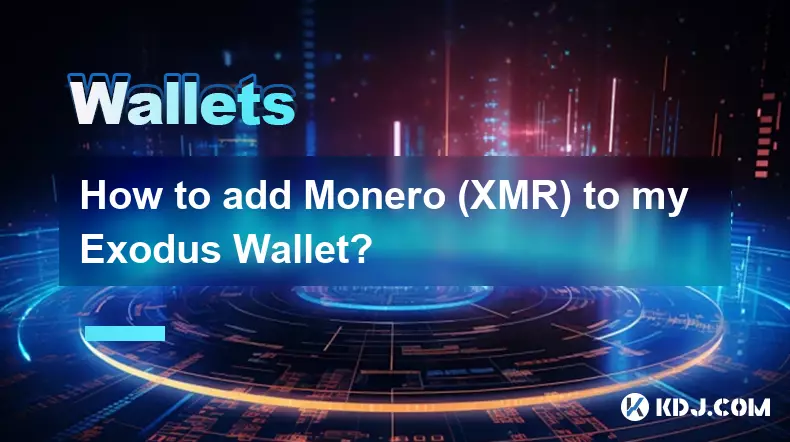
How to add Monero (XMR) to my Exodus Wallet?
Oct 10,2025 at 07:55am
Adding Monero (XMR) to Your Exodus WalletExodus Wallet supports Monero, one of the most privacy-focused cryptocurrencies available. Adding XMR to your...
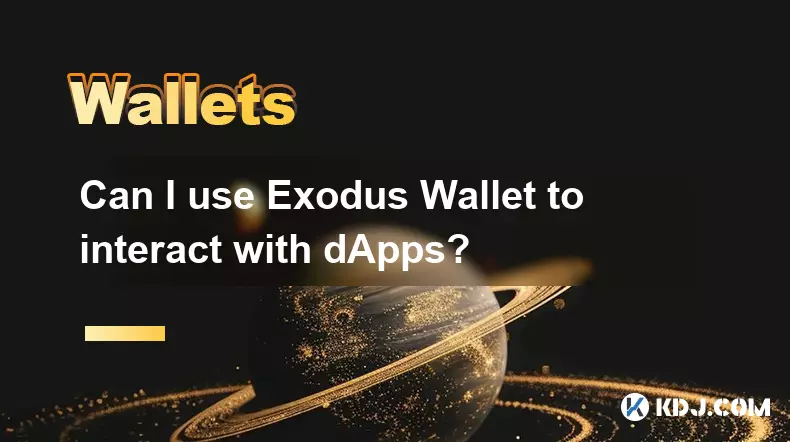
Can I use Exodus Wallet to interact with dApps?
Oct 10,2025 at 01:18pm
Exodus Wallet and dApp Integration1. Exodus Wallet has evolved into a multi-chain cryptocurrency wallet that supports a growing number of blockchains,...

How to find my Dogecoin (Doge) address in Exodus Wallet?
Oct 10,2025 at 09:01am
Finding Your Dogecoin Address in Exodus WalletExodus Wallet is a popular choice for storing various cryptocurrencies, including Dogecoin (DOGE). It of...
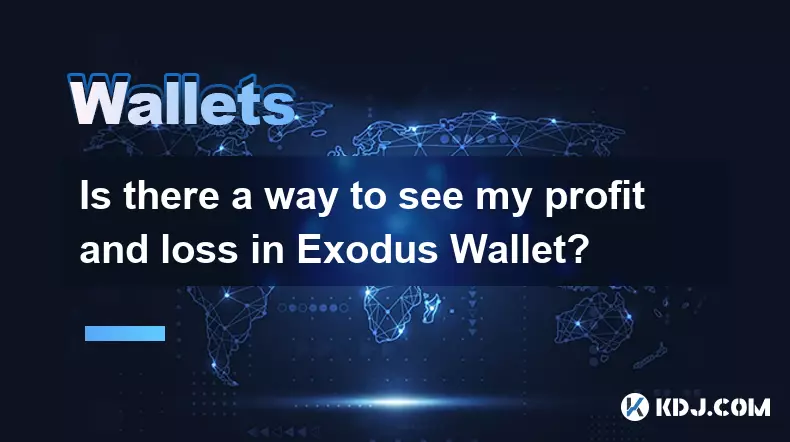
Is there a way to see my profit and loss in Exodus Wallet?
Oct 10,2025 at 12:19am
Understanding Profit and Loss Tracking in Exodus WalletExodus Wallet is known for its user-friendly interface and support for a wide range of cryptocu...

What are the fees for swapping crypto in Exodus Wallet?
Oct 11,2025 at 08:37am
Understanding Crypto Swap Fees in Exodus Wallet1. Exodus Wallet operates as a non-custodial cryptocurrency wallet that allows users to swap digital as...
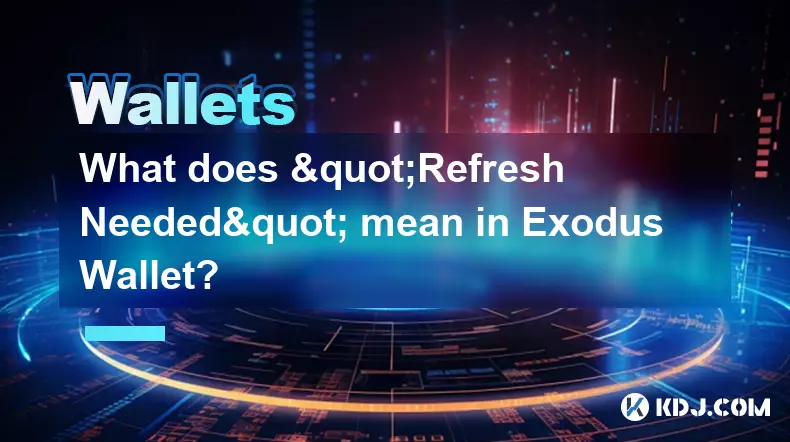
What does "Refresh Needed" mean in Exodus Wallet?
Oct 10,2025 at 10:18am
Understanding 'Refresh Needed' in Exodus WalletExodus Wallet is a popular cryptocurrency wallet known for its user-friendly interface and broad suppor...

How to add Monero (XMR) to my Exodus Wallet?
Oct 10,2025 at 07:55am
Adding Monero (XMR) to Your Exodus WalletExodus Wallet supports Monero, one of the most privacy-focused cryptocurrencies available. Adding XMR to your...

Can I use Exodus Wallet to interact with dApps?
Oct 10,2025 at 01:18pm
Exodus Wallet and dApp Integration1. Exodus Wallet has evolved into a multi-chain cryptocurrency wallet that supports a growing number of blockchains,...

How to find my Dogecoin (Doge) address in Exodus Wallet?
Oct 10,2025 at 09:01am
Finding Your Dogecoin Address in Exodus WalletExodus Wallet is a popular choice for storing various cryptocurrencies, including Dogecoin (DOGE). It of...

Is there a way to see my profit and loss in Exodus Wallet?
Oct 10,2025 at 12:19am
Understanding Profit and Loss Tracking in Exodus WalletExodus Wallet is known for its user-friendly interface and support for a wide range of cryptocu...

What are the fees for swapping crypto in Exodus Wallet?
Oct 11,2025 at 08:37am
Understanding Crypto Swap Fees in Exodus Wallet1. Exodus Wallet operates as a non-custodial cryptocurrency wallet that allows users to swap digital as...

What does "Refresh Needed" mean in Exodus Wallet?
Oct 10,2025 at 10:18am
Understanding 'Refresh Needed' in Exodus WalletExodus Wallet is a popular cryptocurrency wallet known for its user-friendly interface and broad suppor...
See all articles





















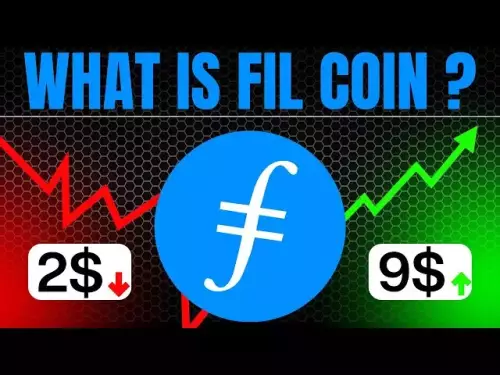



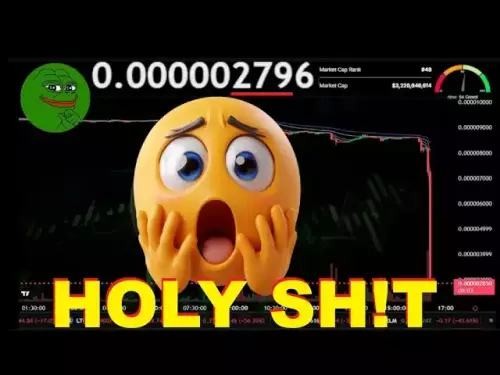
![Internet Computer Price Prediction [ICP Crypto Is A Hold?] Here’s Why Internet Computer Price Prediction [ICP Crypto Is A Hold?] Here’s Why](/uploads/2025/10/11/cryptocurrencies-news/videos/internet-computer-price-prediction-icp-crypto-hold/68e9ac40cf659_image_500_375.webp)















































